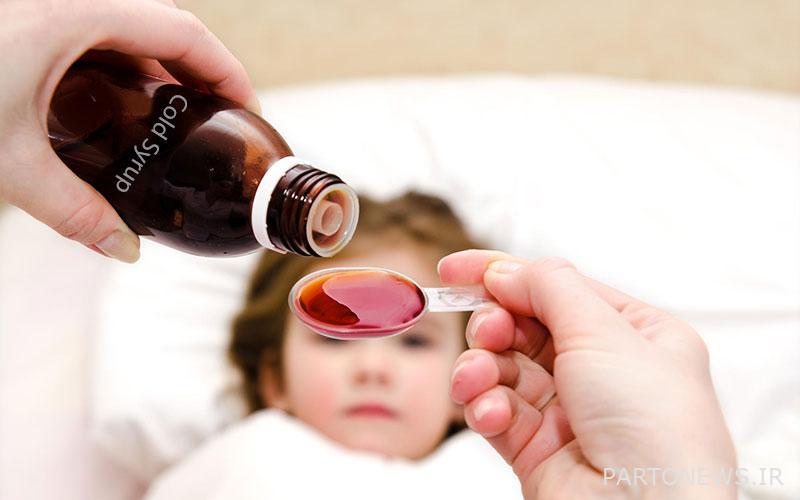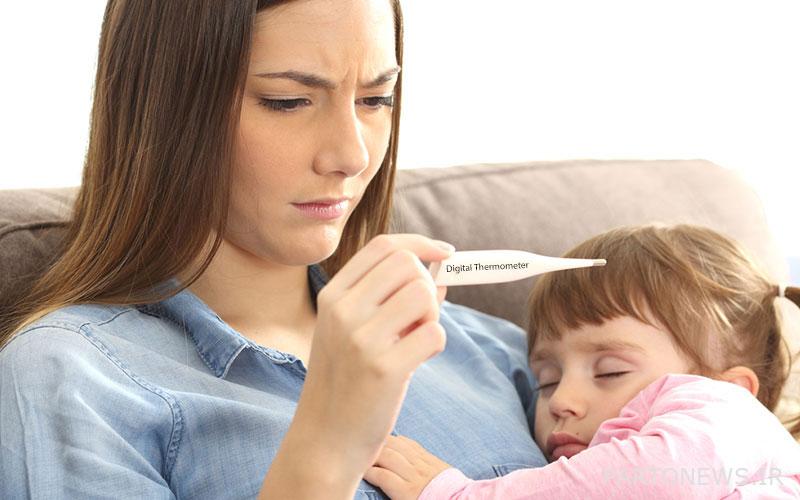How to control cold fever in children with the simplest solutions

One of the most stressful symptoms of a cold is fever in children, which is often a major concern for parents. Fever is a sign that the body is fighting an infection and is actually the body’s natural response to the infection. The only way to reduce fever in children is not to give them acetaminophen drops or syrup. Other solutions can be used for this purpose. In this article, we will examine how to control cold fever in children.
What we read in this article
Why does the child have a fever?
According to experts, whenever the body temperature reaches 38 degrees Celsius (100.4 degrees Fahrenheit) or higher, the person has a fever. Before you start taking cold medicine syrup for children immediately, you should know a little more about fever and how to control it. The body has various ways to maintain its normal temperature and uses organs such as the brain, skin, muscles and blood vessels. Body temperature rises for several reasons:
- Chemicals called cytokines are made in response to the invasion of a microorganism in the body.
- Build more macrophages to fight pathogens.
- Production of natural antibodies to help the body fight infection.
- Many bacteria are trapped in a covering membrane. If this membrane is broken, the contents can be toxic to the body and stimulate the brain to raise body temperature.
Conditions that lead to fever include infectious diseases, taking certain medications, heatstroke, blood transfusions, brain disorders, some autoimmune diseases, and some cancers. Colds in children are also an infectious disease that causes fever.
Signs that the child has a fever
Before explaining how to control a cold fever in children, we will explain what are the signs of a fever in a child’s body. A child with a fever may feel more restless than ever. The following symptoms may occur as his body temperature reaches 38 degrees Celsius or higher:
- Your child may not be as active or talkative as usual
- He has no appetite for food and prefers to drink water
- It is possible for the baby to feel very hot and feel that it is burning inside
If your child is less than 3 months old and his or her body temperature has risen above 38 degrees Celsius, see your pediatrician immediately for further tests.
How to control cold fever in children
Give your child a herbal medicine such as acetaminophen or ibuprofen. Be careful never to give him aspirin as this medicine can cause Reye’s syndrome in children. Other ways you can help lower your fever include:
Take off baby clothes
Remove extra clothing from the baby’s body. If you put a lot of clothes on your child because of a cold, the body temperature will naturally rise and it is clear that the fever will also increase. Even if the child has a fever, do not cover him or her with a blanket or clothing that is too thick.
Give the baby more fluids
One of the best ways is to encourage your child to drink more water. If he does not want to drink water, give him fruit juices or teas. Of course, the age of the child must also be taken into account in this regard. For example, orange juice may not be suitable for a 4-month-old baby.
Scrub the baby
Related Posts
How to control cold fever in children can also be done by scaling. You can use lukewarm water for this purpose. Note that the use of cold water reduces the heat exchange between the blood and the skin and causes a shock to the body. Put a cloth towel in lukewarm water and after taking the water, put it on the baby’s forehead and back of the neck. Also, remove a damp sponge and moisturize other parts of her body. You can also soak your baby’s hands and feet in a basin with lukewarm water to lower the body temperature.
High fever is very dangerous in children under 5 years old because it may lead to seizures. Therefore, by observing the fever, take therapeutic measures as soon as possible.
Bathe the baby with lukewarm water
Bathing with lukewarm water can be effective in reducing fever. Be careful never to bathe your baby in cold water, as this may make the fever worse. Another thing to keep in mind is to never leave your child alone in the bathroom. This can be costly, especially for a child who is lethargic and has a fever.
Use of cold medicines for children
We have explained to you how to control cold fever in children. If you decide to take a cold medicine, be sure to consult your pediatrician. According to the Food and Drug Administration, no child under the age of 2 should take anti-cough or anti-cold medicine containing anticonvulsants or antihistamines. In older children, these medications should also be used with caution to prevent possible side effects.

Acetaminophen suppositories to lower fever
Acetaminophen suppositories for children can be used when the fever is very high, in consultation with a doctor. The suppository dose should be determined based on the child’s weight. If your child also has diarrhea with a cold, you should not use a suppository. Medications such as ibuprofen syrup should not be used on an empty stomach.
How often should a child’s fever be measured?
The answer to this question depends exactly on the child’s health condition. So it’s still best to have your doctor tell you to take a fever every few hours. Usually, if the child is sleeping soundly, there is no need to wake him up regularly and check the fever. But if your child has a history of seizures or has a very high fever that does not go down easily, you should monitor his or her fever hour by hour with a digital thermometer or mercury.
What is the best thermometer for children?
Digital thermometers are the best type of thermometer to measure a child’s body temperature. They can be placed in the mouth, anus or under the arm. For young children, the rectal temperature will show the most accurate degree of fever. If your child is over 5 years old, you can make a more accurate measurement by placing a thermometer in their mouth. Note that placing the thermometer under the arm is less accurate and less reliable. If you have a thermometer under your arm, it is usually necessary to add a degree to the degree of temperature measured to get a more accurate temperature.

When should a child see a doctor despite having a fever?
Fever can be a serious warning sign in many cases. Although we have described how to control the common cold in children, in the following cases, you should see a doctor for more detailed examinations:
- If the child is 3 months old or younger and has a fever of 38 degrees Celsius or higher
- If the child (at any age) has a fever of more than 40 degrees Celsius
- If the child is less than 2 years old and has a fever of 38 degrees Celsius for more than 1 day
- If the child is 2 years old or older and has a fever of 38 degrees Celsius for more than 3 days
- If the child is restless and cries due to fever and can not be calmed
In this case, be sure to see a pediatrician as soon as possible.
Please rate this article
[مجموع: ۲ میانگین: ۵]


